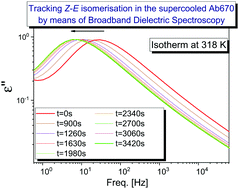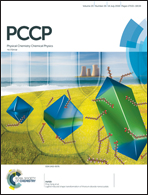Studies on dynamics and isomerism in supercooled photochromic compound Aberchrome 670 with the use of different experimental techniques
Abstract
Differential Scanning Calorimetry (DSC), X-ray diffraction (XRD), Fourier Transform Infrared (FTIR) and Broadband Dielectric (BD) spectroscopies were applied to investigate the thermal, structural, photochemical and dynamical properties of a fulgide-type photochromic compound, Aberchrome 670 (Ab670). In the original crystals, characterized by a pale yellow color, molecules take the E conformation. However, upon UV irradiation of either the crystalline or glassy compound, it isomerizes to the closed (C) form, characterized by the intense red tone. Although, we have found that such conversion is not complete (far below 100%). It was shown that due to UV irradiation as well as heating of the studied fulgide to high temperature (above the melting point), the Z isomer is formed. Further FTIR measurements performed on the UV irradiated and molten compound indicated that upon annealing of the sample in the vicinity of the glass transition temperature the Z isomer reverts back to the original E form. The final confirmation of this supposition has come from BDS studies, where the strong shift of the structural relaxation process during time-dependent isothermal measurements was noticed. One can add that a similar pattern of behavior has been observed previously by some of us in the case of tautomerism or mutarotation [Z. Wojnarowska et al., J. Chem. Phys., 2010, 133, 094507; W. Kossack et al., J. Chem. Phys., 2014, 140, 215101; P. Wlodarczyk et al., J. Phys. Chem. B, 2009, 113, 4379–4383; P. Wlodarczyk et al., J. Non-Cryst. Solids, 2010, 356, 738–742]. From the analysis of the time variation of the structural relaxation times, the activation barrier, EA = 18 kJ mol−1, for Z to E isomerization in Ab670 was calculated. Interestingly, it agrees well with the one determined for a similar kind of transformation in stilbenes. Therefore, we found that dielectric spectroscopy can be a very useful technique to track Z to E interconversion in the highly viscous supercooled state. Consequently, a unique opportunity to follow this kind of isomerism at high pressures, high electric fields and under nanometric spatial confinement in pure supercooled compounds appeared.



 Please wait while we load your content...
Please wait while we load your content...